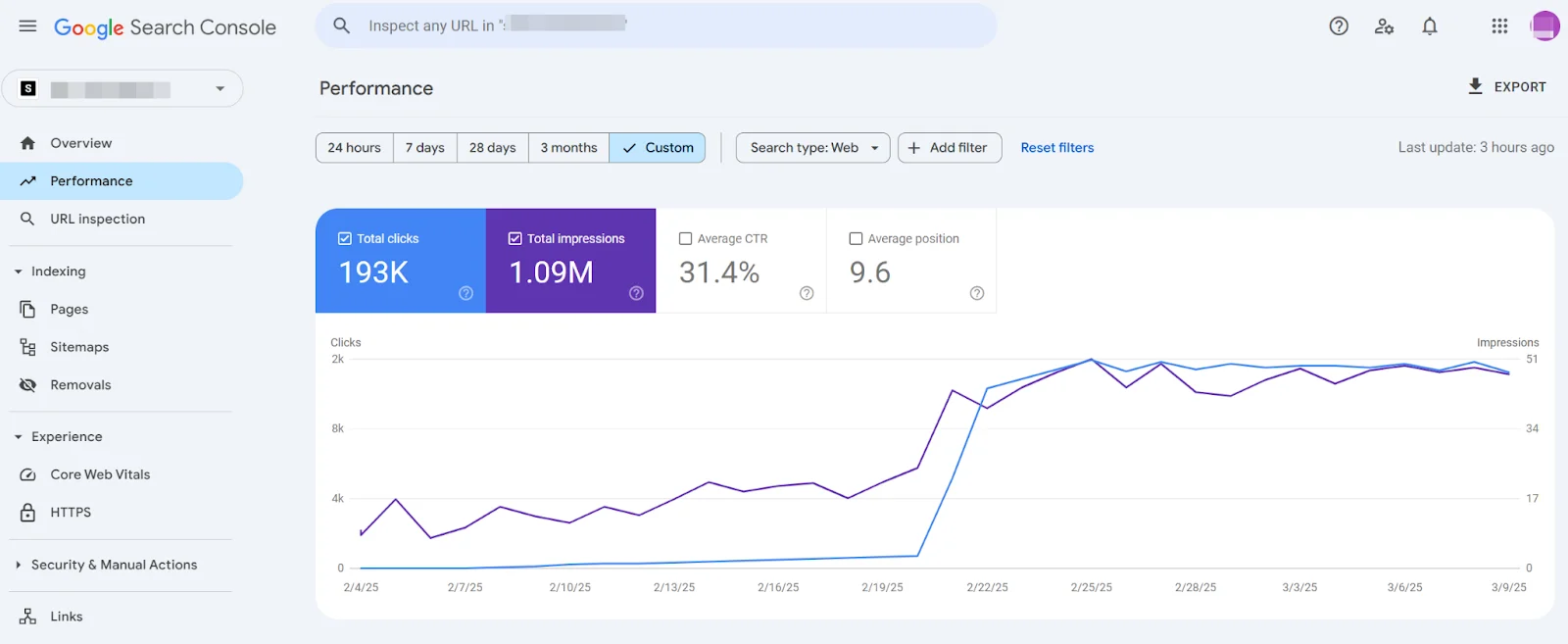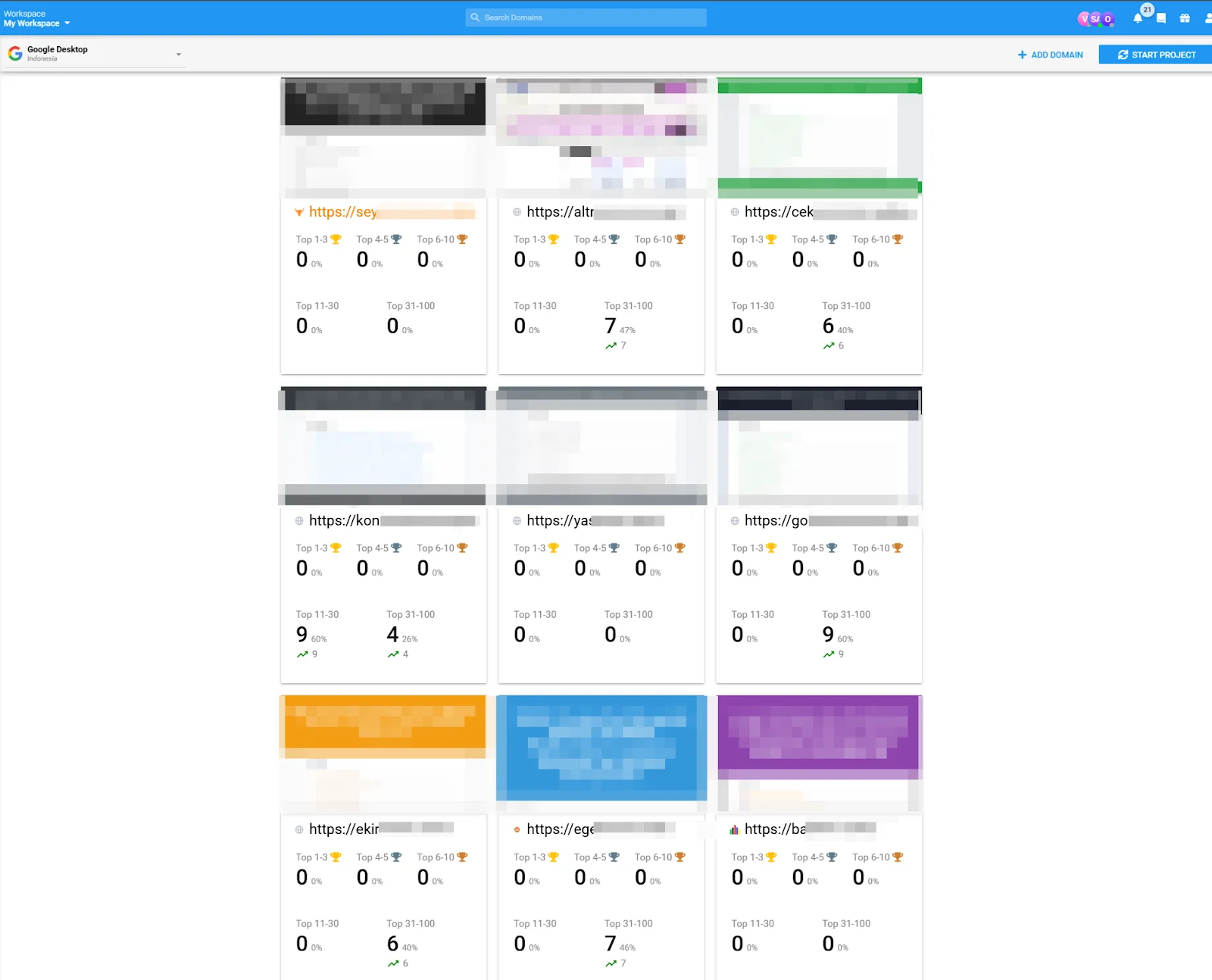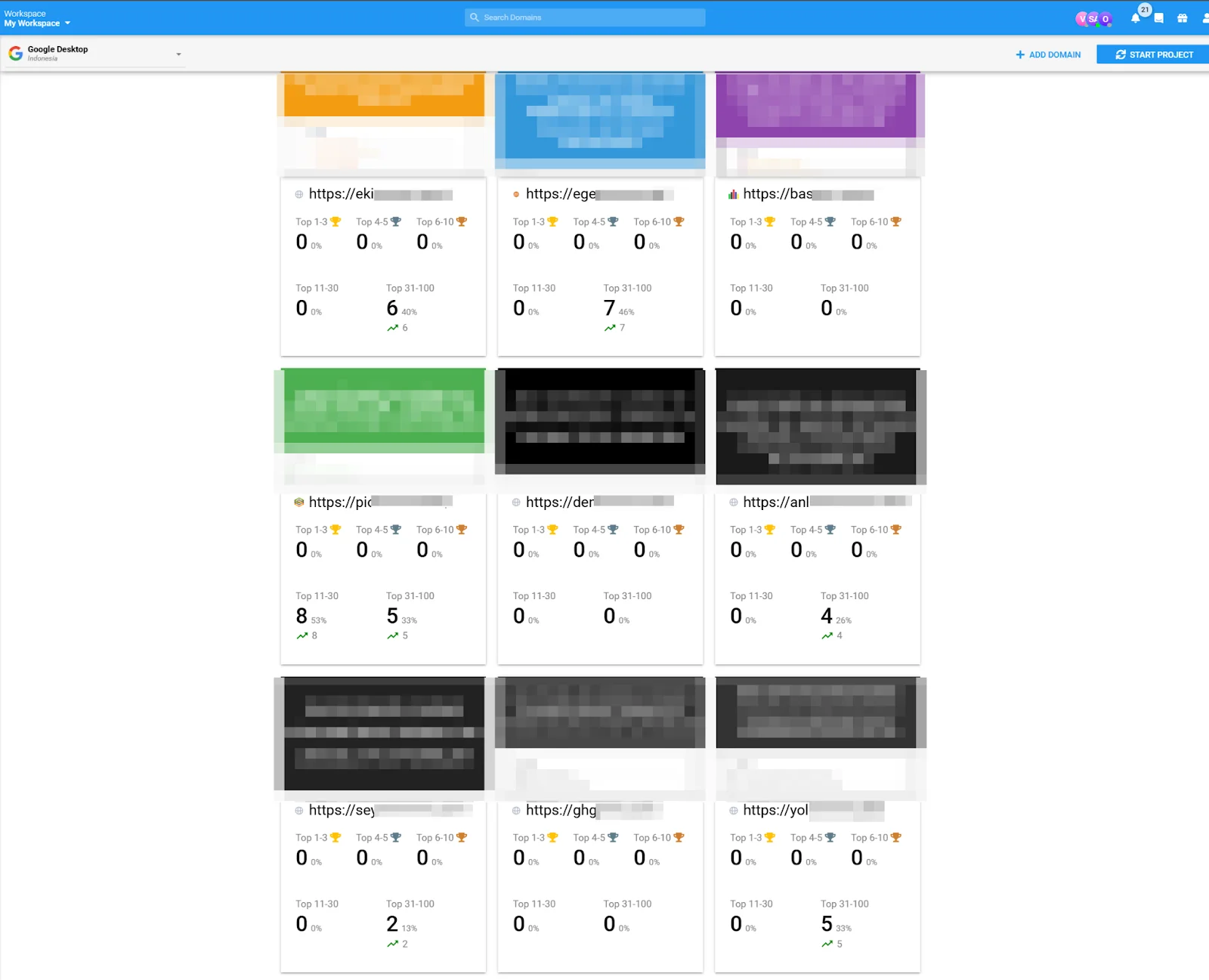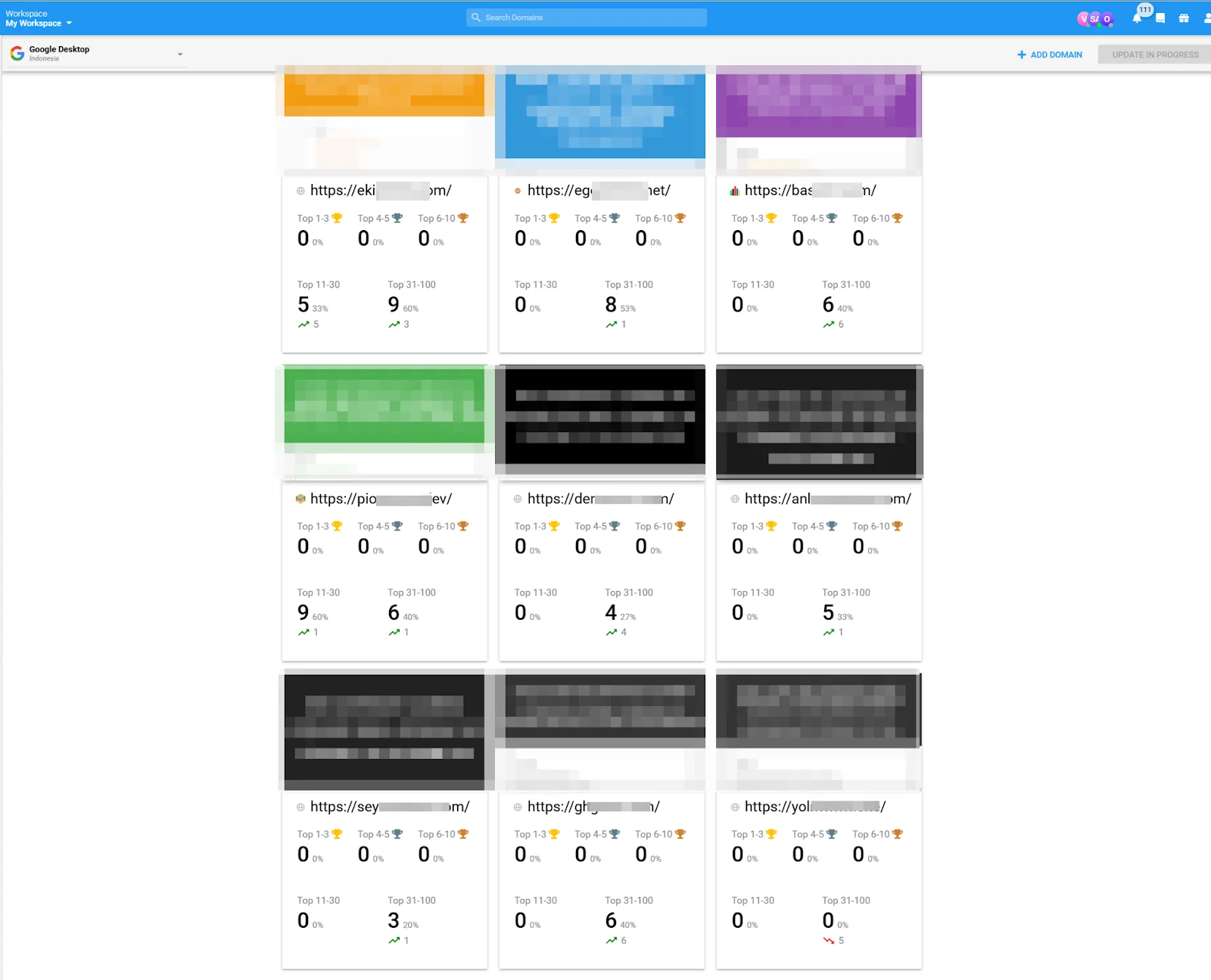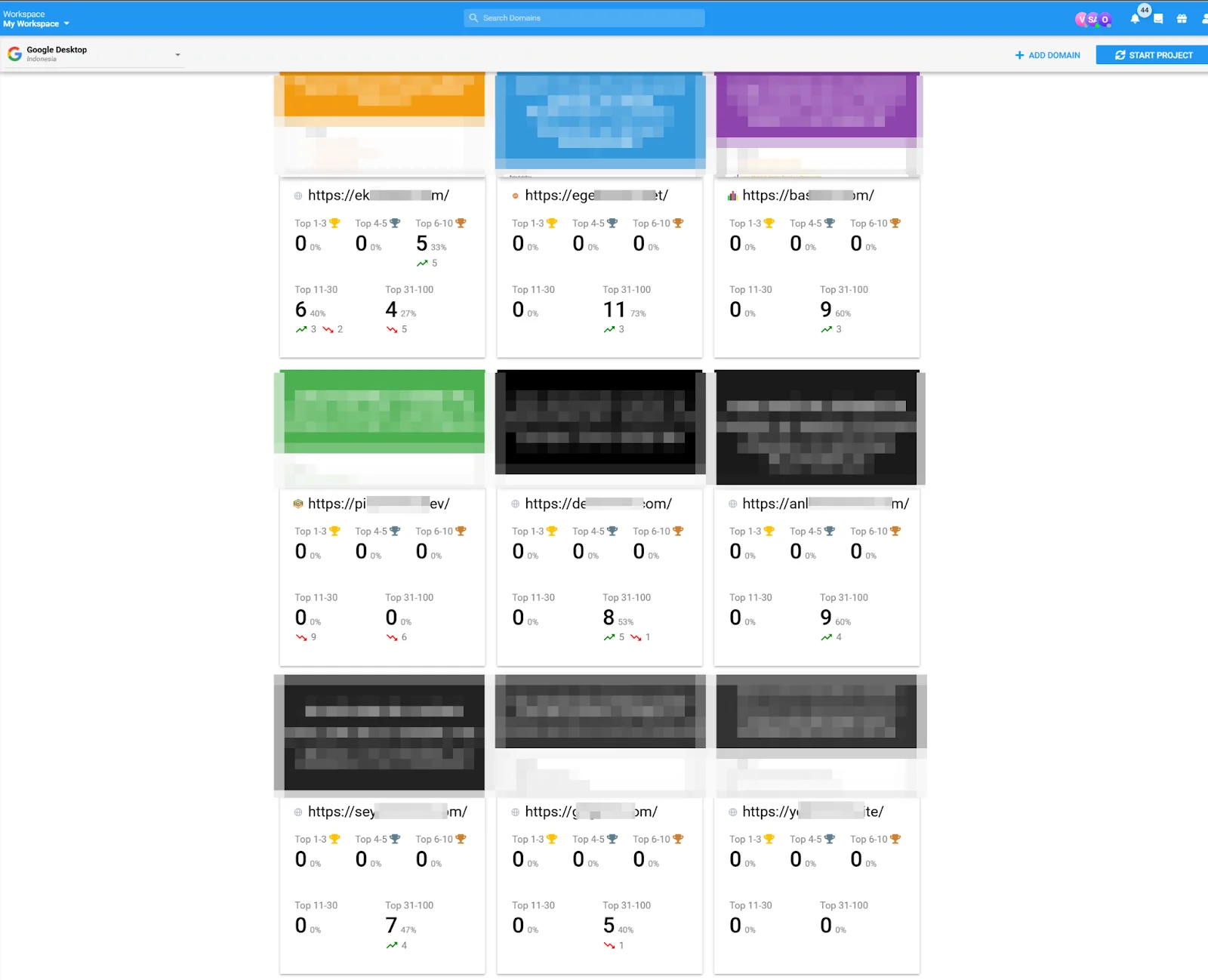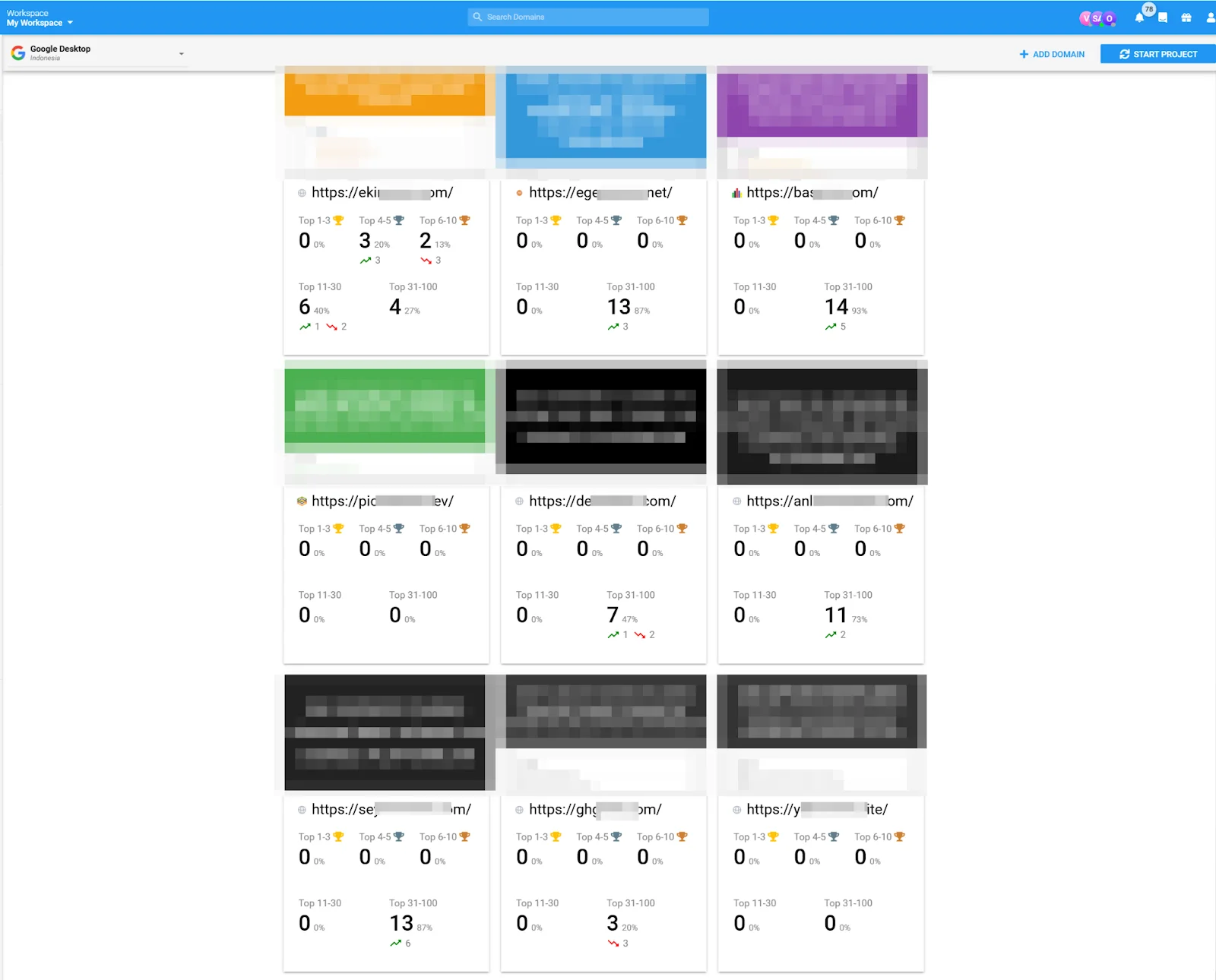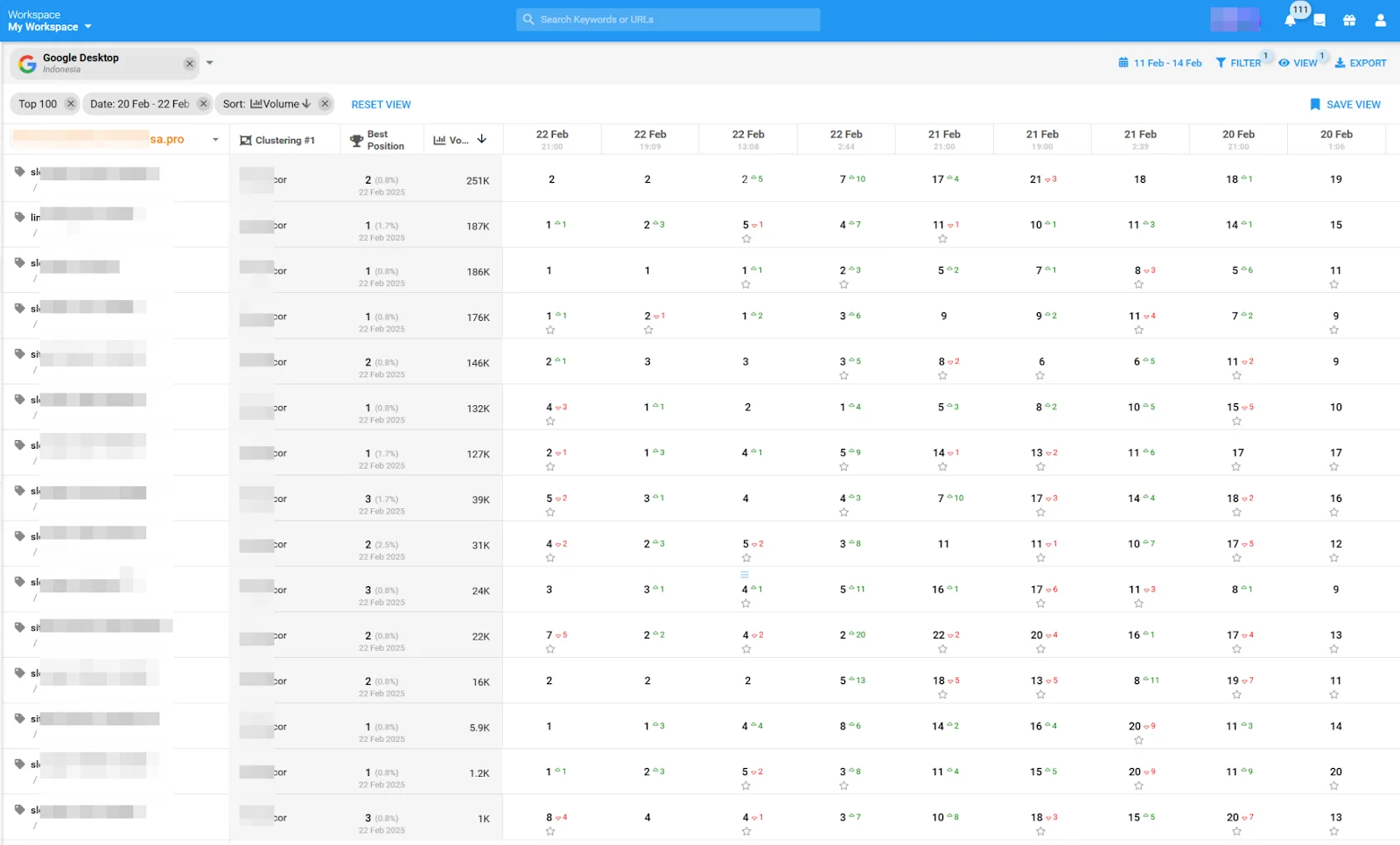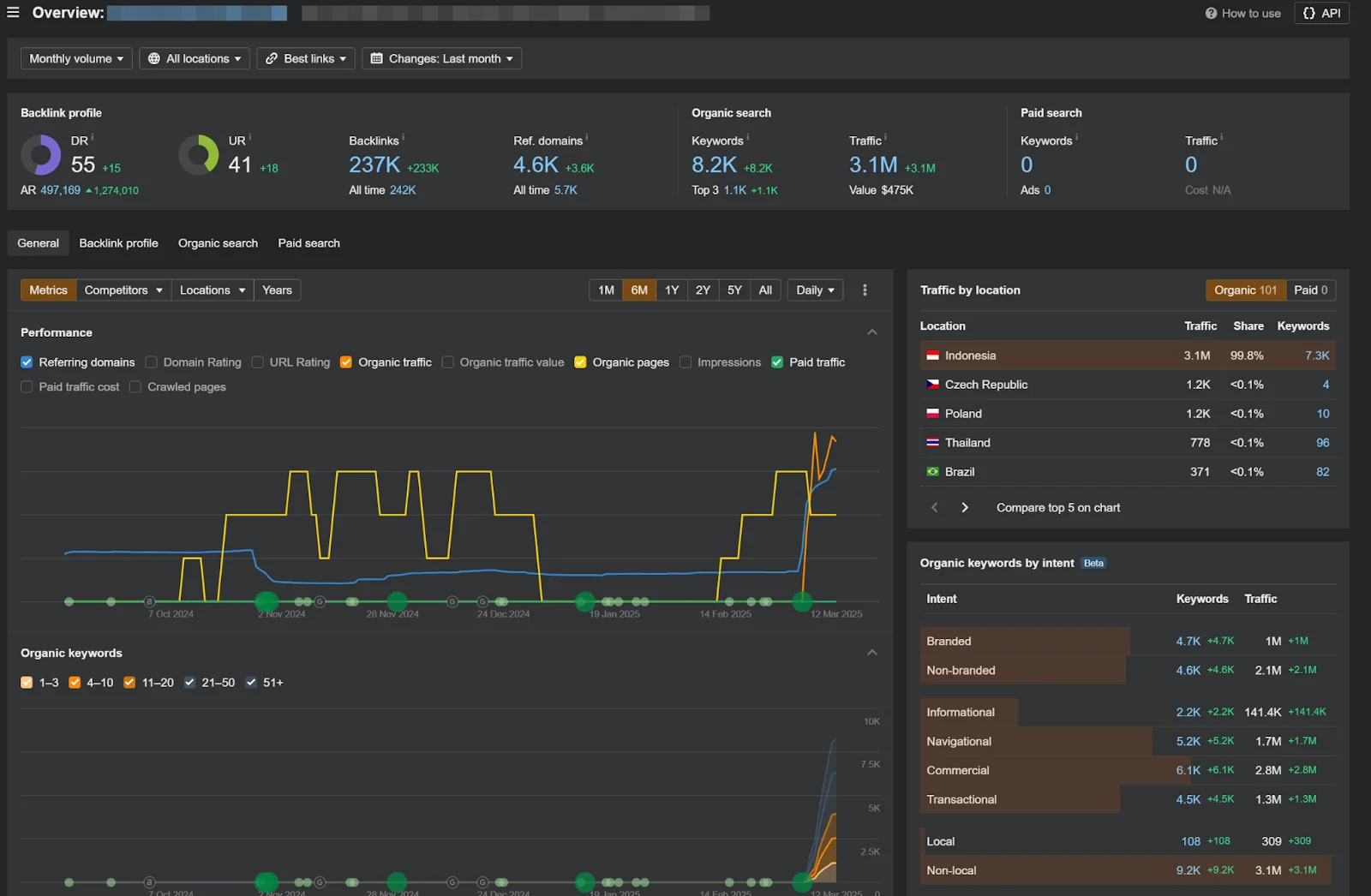Top 1 in Indonesia with Massive Link-Building
- Niche: iGaming;
- GEO: Indonesia;
- Website Type: Monobrand
Here is the link to the table – https://docs.google.com/spreadsheets/d/1mIXSZAzHPFb3Der7EmIK4E16sD41ZQUDuJDGqj76Iac/.
This is the same report we provided to the client, which served as the foundation for our weekly promotion strategy.
We strongly recommend reading the case study while referring to the table. This will make it much easier for you to understand the key points, track each stage, and see how the results changed after every action.
